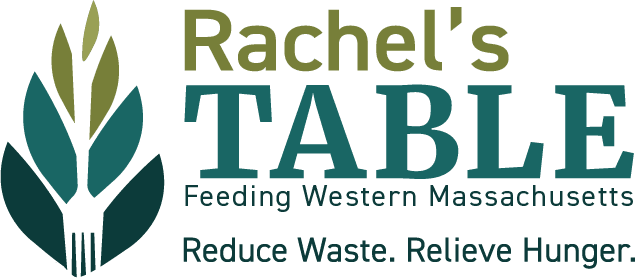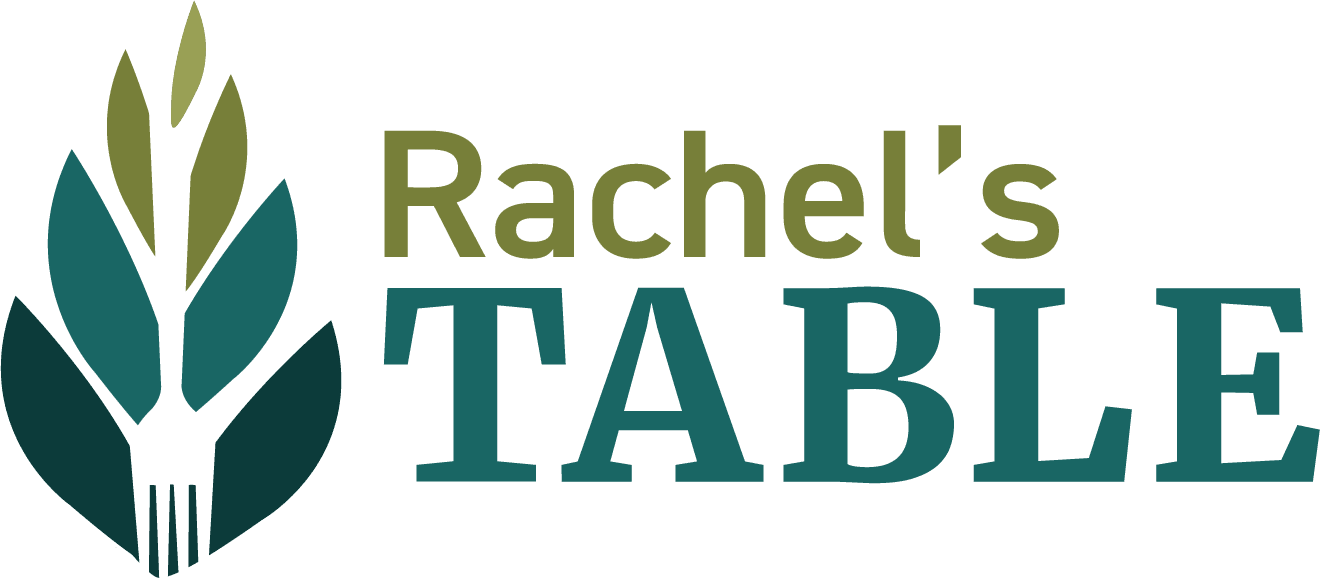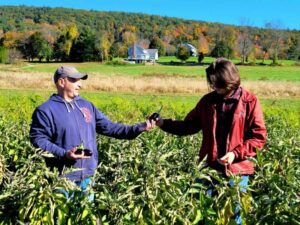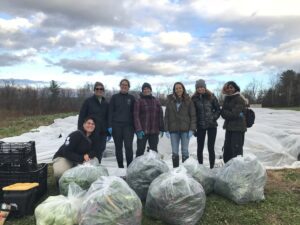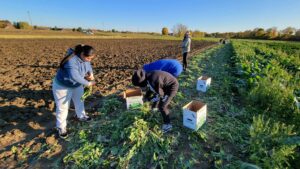What is Gleaning?
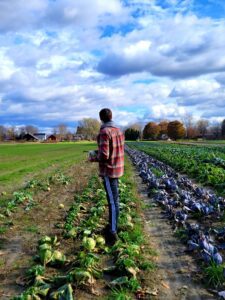 Gleaning is the practice of gathering grain or produce after harvest. While peoples throughout history have had culturally-specific practices for distributing food equitably, our approach to gleaning has its roots in Torah:
Gleaning is the practice of gathering grain or produce after harvest. While peoples throughout history have had culturally-specific practices for distributing food equitably, our approach to gleaning has its roots in Torah:
“Now when you reap the harvest of your land, you shall not reap to the very corners of your field, nor shall you gather the gleanings of your harvest. Nor shall you glean your vineyard, nor shall you gather the fallen fruit of your vineyard; you shall leave them for the needy and for the stranger. I am the Lord your God.” – Leviticus 19: 9-10
Anyone can be a gleaner! Whether gleaning for your family or neighbors, for donation to a Rachel’s Table partner agency, or as part of a mutual aid network, Rachel’s Table welcomes anyone who wants to glean together.
Learn more about our distribution networks and how the seed of an idea envisioned by one of RTWM’s founders, Bea Loevy, has developed into our unique approach in this StoryMap created by Smith College students.
How does Gleaning work?
Rachel’s Table gleans in several ways throughout the growing season (July-November) :
- We facilitate open community gleans an average of 2-3 times per week. Gleaners harvest food for RTWM’s partner agencies as well as for their own distribution networks.
- We host constituents/clients from partner agencies so that people who are directly impacted by food insecurity can participate in harvesting food for themselves, their families, and their communities.
- We offer gleaning events to high-level sponsors. These gleans include discussion of food insecurity and RTWM’s holistic approach to alleviating immediate hunger crises and addressing root causes of hunger.
- We facilitate gleans for unique interest groups that are learning about food security and want to get involved in local solutions to hunger. To ensure these gleans primarily benefit people who are impacted by food insecurity, RTWM prioritizes groups that have multiple points of contact with us throughout the year and/or are committed to understanding and taking action around food access, food equity, and food sovereignty.
Why don’t farmers harvest and sell the produce themselves?
Farmers often grow more than they can sell to ensure they will have enough for their customers. Additionally, farmers cannot sell some produce because of imperfect appearances (small, misshapen, scarred). This surplus food gets tilled back into the earth, which helps build soil but does not directly help to feed people.
If you’re a farmer or you know a farmer who is interested in having gleaners, take a look at this Farmer FAQ!
Ready to get out and glean?!
- Check our Events Calendar for up-to-date gleaning opportunities (July-November).
- Sign up for our Gleaning Email List HERE and register for a glean HERE.
- To schedule a private group glean, or if you are a grower with food you’d like for us to glean, contact Cara at csilverberg@feedwma.org.
- Please review our Gleaning Handbook before joining us in the fields!
